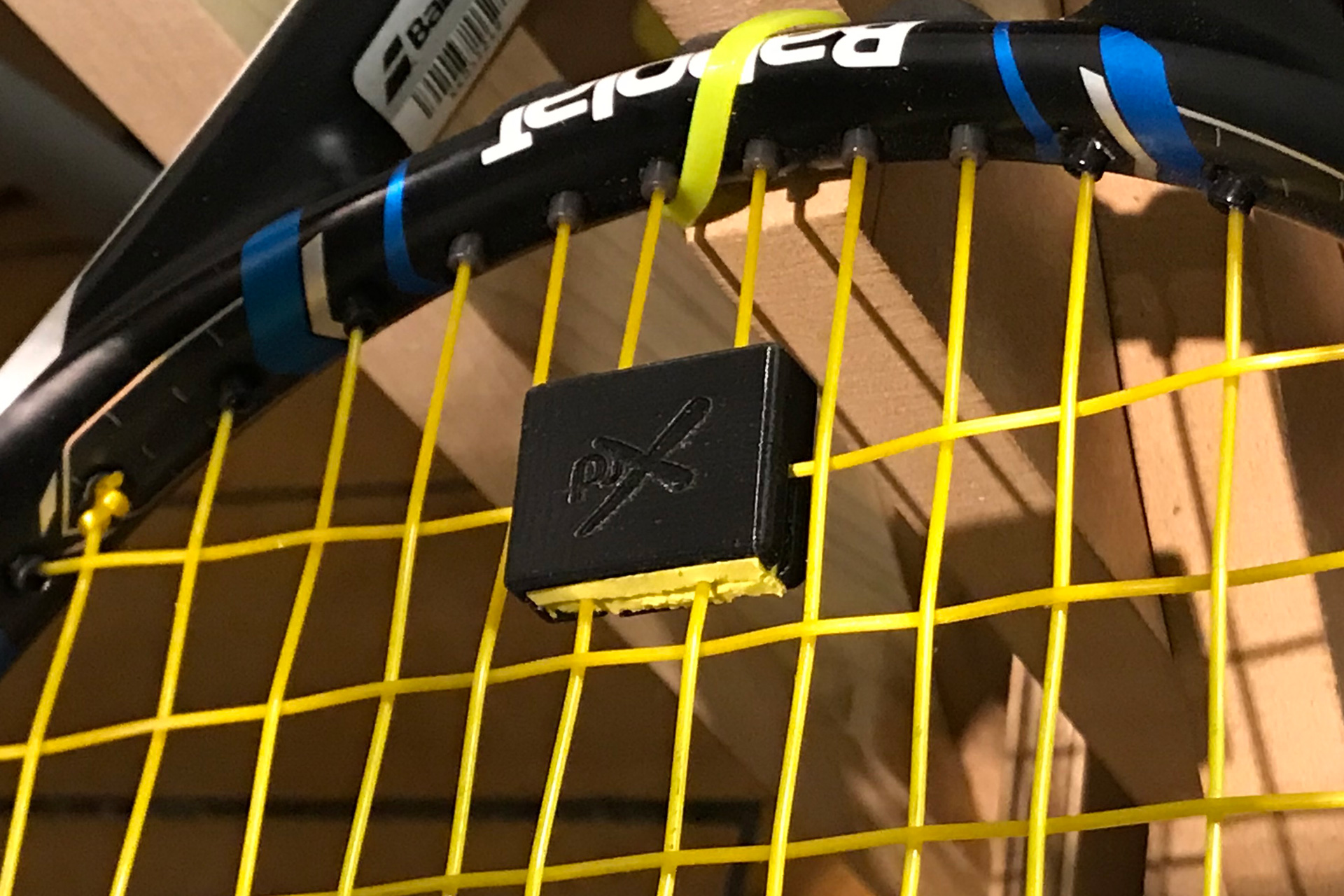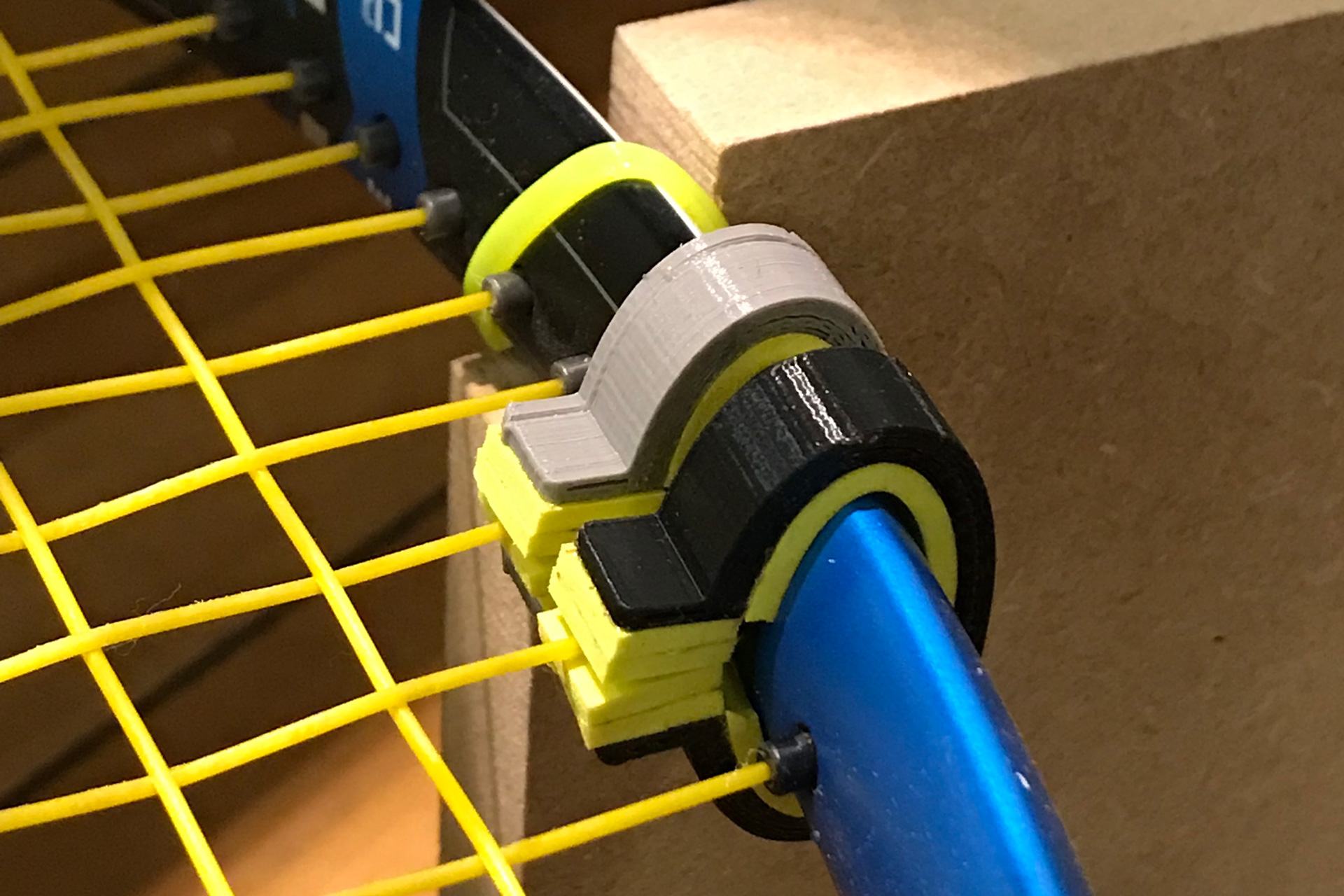Racquet Vibration Damper
Creator: Lance Yijie Li
Supervisor: Peter Yeadon
Collaborator: Dave Sherman, Rogers Corporation
This materials-driven study conceives of new opportunities for Poron XRD, a rate-dependent foam that is produced by Rogers Corporation. The material is excellent at absorbing and dissipating impact energy, hence, it’s currently used in protective apparel and sporting products, where large impact forces are experienced.
Instead of focusing on those large, single impact forces, Li was interested in how the material might mitigate a range of smaller vibrations in sports racquets, as these vibrations can make it difficult to control the ball and can cause tennis elbow. The current dampers are pretty rigid and only even out the vibrations, through the racquet, but the energy passing from the frame to the hand is still the same.
Instead of focusing on those large, single impact forces, Li was interested in how the material might mitigate a range of smaller vibrations in sports racquets, as these vibrations can make it difficult to control the ball and can cause tennis elbow. The current dampers are pretty rigid and only even out the vibrations, through the racquet, but the energy passing from the frame to the hand is still the same.
After a lot of design iterations and tests, two final designs proved to be superior at diminishing racquet vibrations. The first one is a square damper that is placed on the cross string that’s closest to the hand. The center pair of strings also pass through it. This version is meant for professional players who need a small, light damper. And, since professional players hit balls with the middle strings 90% of the time, it’s location is highly efficient.
The second design is a clip that wraps the racquet frame and is attached to a single string. This is meant to target a more casual player. The user can choose which strings they want to dampen, as their hitting points are more random. For all of the prototypes, testing was done with a jig that secured the racquet frame and guaranteed the same impact point each and every time. Results showed that the two final designs, the square and the clip, work significantly better than current solutions.
The second design is a clip that wraps the racquet frame and is attached to a single string. This is meant to target a more casual player. The user can choose which strings they want to dampen, as their hitting points are more random. For all of the prototypes, testing was done with a jig that secured the racquet frame and guaranteed the same impact point each and every time. Results showed that the two final designs, the square and the clip, work significantly better than current solutions.





